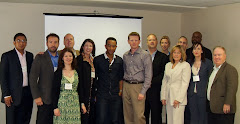More than four out of five (84 percent) chief marketing officers (CMOs) allocate less than ten percent of their budgets to experimenting through social media and non-traditional communications channels, with more than half (55 percent) allocating just five percent, according to a study by The CMO Club and Hill & Knowlton released today. By contrast, according to a recent study1, the number of adult Internet users who have profiles on social networks quadrupled to 35 percent in 2008, from eight percent in 2005.
Our research shows that seven out of ten CMOs say they have medium or high levels of comfort in dealing with non-traditional media, yet few are adopting these strategies for their own brands, missing out on learning from and contributing to the conversations that are taking place online.
“Marketing used to be a linear process, with a discussion flowing from the CMO to the target audience. In today’s digital age, communication has evolved into a new model that requires active listening and engaging in numerous conversations,” said Pete Krainik, CEO, The CMO Club. “CMOs are finding the additions to the job more challenging and the need to lead beyond the marketing department is critical for their success.”
Adopting social media policies
According to a survey of its members, three out of ten (29 percent) of CMOs report having a social media policy that is widely adhered to within their company and a further 31 percent are currently developing a policy. Implementing these policies is proving to be a challenge, with just over a quarter (26 percent) of CMOs stating they have a policy but it is not complied with within their companies.
"Bloggers are the new media trendsetters/reviewers for products and services, a trusted voice by those who follow their posts," said CMO Club member Ted Rubin, chief marketing officer, e.l.f. Cosmetics. "If you empower these consumers to evangelize your brand, establish yourself as a trusted source and give them the tools, they will run with it and lend you their credibility."
Added member Erin Hintz, vice president, worldwide consumer marketing, Symantec Corporation, "While the social media world is new territory for all companies, we already have some best practices with our Norton brand that many CMOs can glean from. Our company has striven to deliver transparency in this space and we work hard to ensure employees understand their role and responsibility."
Lack of integration
CMOs report a lack of managing or interacting closely with departments within their businesses and, more importantly, with those responsible for communicating with key stakeholders. Nearly half of all CMOs questioned (48 percent) said they have no formal interaction with the department responsible for NGOs. More than a third (39 percent) do not formally liaise with their investor relations departments, and just over a fifth (22 percent) do collaborate with those responsible for liaising with financial analysts.
“I have found that in the past several years, my job has required greater collaboration with colleagues running other departments to create a more unified brand message to all of our audiences, both external and internal,” said member Kent Huffman, chief marketing officer, BearCom Wireless. ”Today, brand and reputation go hand-in-hand, and no company can afford not to work seamlessly as a team.”
Gauging stakeholder sentiment
The majority of CMOs (95 percent) formally track the attitudes or opinions of their customers to their brands, falling to seven out of ten (69 percent) among potential customers. Other non-revenue generating stakeholders take second priority: four out of five CMOs (84 percent) do not gauge the opinions of NGOs; 59 percent do not gauge the general public, and less than a third (32 percent) do not formally gauge sentiment among their employees.
“The marketers’ job is increasingly challenging and many CMOs still are learning how to engage audiences beyond their customers. Everyone is an influencer in today’s marketplace,” said MaryLee Sachs, US chairman and worldwide director, marketing communications, Hill & Knowlton. “Building advocacy by engaging all audiences can lend a tremendous amount of credibility to any marketing program. A holistic approach helps forge new paths to customers, generating brand loyalty and building critical relationships.”
Brand alignment
Currently, only one out of ten CMOs utilize a digital dashboard to disseminate branding or customer data internally through a “real-time” delivery method, while 44 percent of CMOs report using and sharing this data formally on a quarterly or semi-annual basis.
“As we experience this business transformation, CMOs are seeing that they need to focus on three key areas in order to maintain relevancy with their customers and consumers,” said Krainik. “First, expanding internal collaboration is essential; second, timeliness of monitoring and sharing customer data is critical – they must move quicker; and finally broadening their perspectives and formally engaging new external stakeholders is imperative.
These results initiated conversations at last week’s CMO Club summit on new ways to lead brands beyond the marketing department with internal colleagues and external audiences,” added Krainik.
About the Survey
The survey was conducted online with 124 chief marketing officers in the Club responding between September 15, 2009, and October 15, 2009.
Click Here for Survey Results Release
Subscribe to:
Post Comments (Atom)







No comments:
Post a Comment